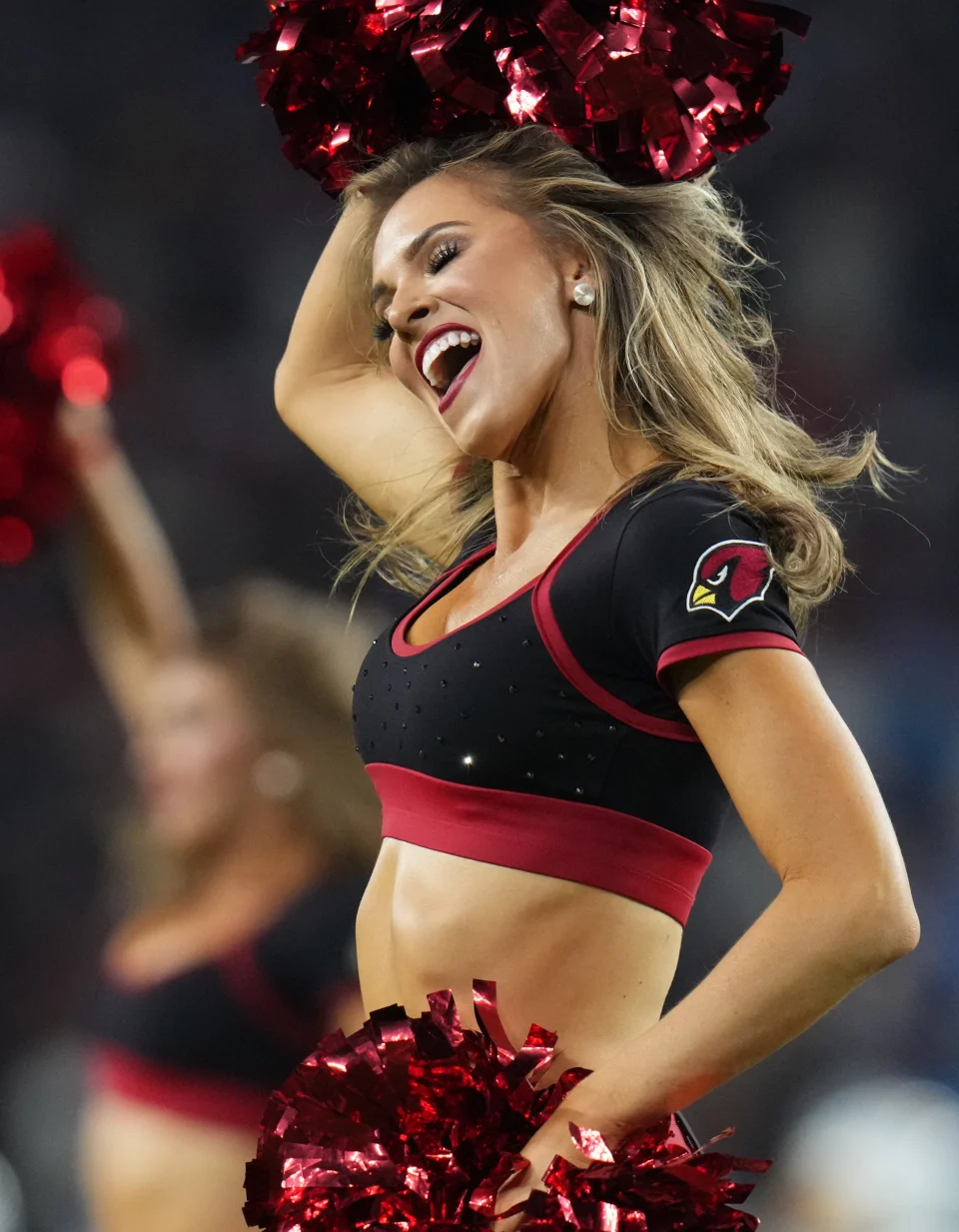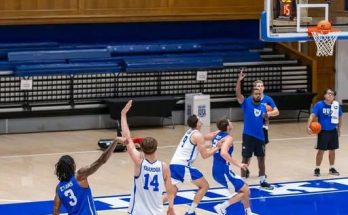The Arizona Cardinals, a storied NFL franchise, have long been known for their passionate fan base and traditions, including the presence of the team’s cheerleaders. The Arizona Cardinals Cheerleaders have been a staple of the franchise for decades, offering fans not just entertainment on game days but also a symbol of pride and unity. However, a recent change in the role of the cheerleaders has left many fans feeling upset, leading to significant debate about the direction of the franchise’s community engagement and whether the team’s leadership has made the right call. The situation has sparked a larger conversation about the evolving role of cheerleaders in professional sports and what fans truly want from their teams in terms of entertainment and engagement.
It all started when the Arizona Cardinals made a surprising announcement about altering the presence of their cheerleaders at home games. For years, the cheerleaders have been an integral part of the in-stadium experience, performing routines during breaks in the action, engaging with fans in the stands, and embodying the spirit of the team. However, the new decision by the team’s management was to scale back the cheerleaders’ participation, limiting their appearances and involvement in the pre-game and halftime entertainment. The move was made in an attempt to modernize the fan experience, streamlining the focus of the game and shifting towards a more game-centric atmosphere.
The announcement, however, was met with immediate backlash from a large section of the Cardinals fan base, many of whom saw the decision as a misstep. Arizona Cardinals fans are known for their unwavering loyalty and fervor, and many of them felt personally slighted by the change, which seemed to disregard a long-standing tradition. Fans quickly took to social media platforms, expressing their discontent with the change. Some felt that the cheerleaders were a beloved part of the game day experience, while others argued that the team was focusing too much on modernizing the fan experience at the expense of the community that had supported them for years.
In the age of social media, dissenting opinions can spread quickly, and that was certainly the case with this issue. Fans posted pictures of their experiences at Cardinals games over the years, showing off memories of high-energy halftime routines and moments where the cheerleaders had engaged with the crowd, adding to the festive atmosphere that is so often associated with NFL games. For these fans, the cheerleaders were much more than just performers. They were a central part of the experience that created a sense of unity and excitement, and their reduced role left many feeling disappointed and disconnected.
One of the key issues many fans voiced was that the cheerleaders provided a sense of connection to the team and the larger football culture. The Arizona Cardinals have had a rocky history in terms of on-field success, with the team often struggling to find sustained success. While the franchise has had some high points, such as their appearance in Super Bowl XLIII, they have also experienced long stretches of mediocrity. For many fans, the cheerleaders provided a constant source of energy and enthusiasm, regardless of the team’s performance. In times when the Cardinals weren’t necessarily competing for championships, the cheerleaders were always there to remind fans of the passion and dedication of the franchise.
Fans expressed concern that this change was part of a broader trend within the NFL to focus more on the “business” aspect of the league rather than the community aspect. The Cardinals, like many other teams, have shifted toward a more corporate approach to fan engagement, focusing on maximizing profit and improving the efficiency of operations. While these efforts may help the team run more smoothly off the field, many fans felt that they detracted from the sense of family and community that they had come to expect from the franchise. The Cardinals, like all NFL teams, are in the business of entertainment, but for many fans, the change in the role of the cheerleaders felt like a move that valued profits over the fan experience.
Another layer of the controversy arose from the timing of the decision. The announcement came on the heels of a difficult season for the Cardinals, who were in the midst of a rebuild after a disappointing performance the year before. The fan base had already been feeling frustrated with the team’s lack of on-field success, and the decision to limit the cheerleaders’ role seemed to add insult to injury. Fans were already grappling with the challenges of a rebuilding team, and for many, this change felt like one more example of the front office not listening to the voices of the fan base. It felt as if the team was once again choosing to prioritize external factors over what the fans wanted most—connection and engagement.
The issue also brought to light the evolving role of cheerleaders in the modern NFL. Over the years, the role of cheerleaders has undergone significant changes. Historically, cheerleaders were seen as little more than attractive women whose primary purpose was to entertain and support the team in a visual capacity. Over time, however, their role has expanded. Many cheerleaders have used their platforms to raise awareness about important social issues, and some have even become influential figures in their own right. In the case of the Arizona Cardinals, many fans felt that the cheerleaders were more than just performers—they were symbols of the team’s spirit and identity. The decision to scale back their presence seemed to ignore the fact that the cheerleaders had evolved into important cultural ambassadors for the franchise.
For some fans, the issue wasn’t necessarily about the cheerleaders themselves but about what their absence represented. The removal of this key component of the fan experience was seen as part of a larger trend in which professional sports teams were trying to distance themselves from the traditions and values that made them beloved in the first place. While the NFL is undoubtedly a business, and business decisions must be made to ensure the profitability of the league and its franchises, many fans felt that the heart and soul of the game was being lost in the process. The cheerleaders were seen as a reminder of the camaraderie and energy that make NFL games unique—a reminder of why fans fall in love with the sport in the first place.
Moreover, the fan reaction to the change raised questions about the growing disconnect between professional sports franchises and their fan bases. Teams are increasingly focused on attracting corporate sponsors and maximizing revenue, often at the expense of the loyal, everyday fans who make up the backbone of the franchise. In this case, the decision to scale back the cheerleaders was seen as another example of the franchise catering to an idea of professionalism and efficiency that didn’t necessarily align with the desires and values of the fan base.
As the controversy continues to unfold, it remains to be seen how the Arizona Cardinals will respond to the backlash. While the decision to alter the cheerleaders’ role may have been made with good intentions, it is clear that the fans have spoken, and their voices cannot be ignored. In the end, the Arizona Cardinals will need to strike a delicate balance between modernization and tradition—recognizing that the two can coexist in a way that enriches the fan experience and strengthens the relationship between the team and its supporters. Whether the team will listen to its fans or continue down the path of corporate modernization remains to be seen, but one thing is certain: The cheerleaders are more than just performers to many Arizona Cardinals fans, and their absence will be felt deeply if the changes stick.



